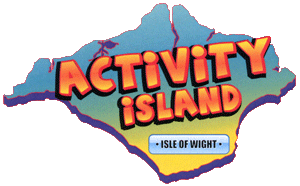
for primary and junior schools

Yarmouth Castle is a small off-square blockhouse built by Henry VIII in 1547, to guard Yarmouth harbour on the Isle of Wight. It is about 30 metres long, including its yard and its large platform on the seaside, which carried the heavier armament.
The fortification was built as part of Henry's second device programme to fortify the English coast with a chain of coastal defences, known as Device Forts or Henrician Castles. These were built to guard against the threat of foreign invasion. As it is a later fortification it did not have the earlier rounded or concentric shape but is a square keep with angular bastions. On the land side a moat (ditch) separated it from the surroundings. The first garrison consisted of 19 men, lead by a 'Master Gunner'.
An arrow-headed bastion on the south-eastern corner was added 1560 for protection against attack over land, while the buildings on the seaside (North and West) were demolished to make room for the platform there. Other additions and modifications to the fort were made at several times in the following centuries. Around 1670, the governor of Wight, Robert Holmes, made the place into his residence. A living house (now a hotel) was built for him next to the 'castle', adjacent to the former entrance (East side, the present entrance is at the South side). The moat was filled in at the same time.
There were military in the fort until 1885 and again during the World Wars. Yarmouth Castle is now owned by English Heritage. There are exhibitions about the garrison life in the 16th century and about ship wrecks in the surrounding sea.





